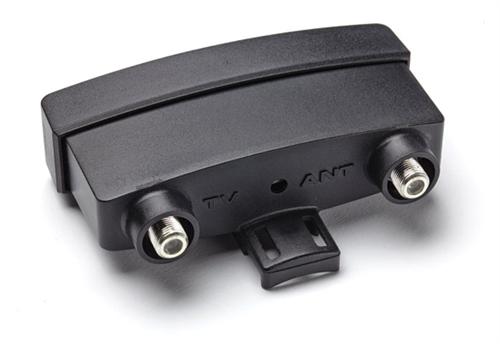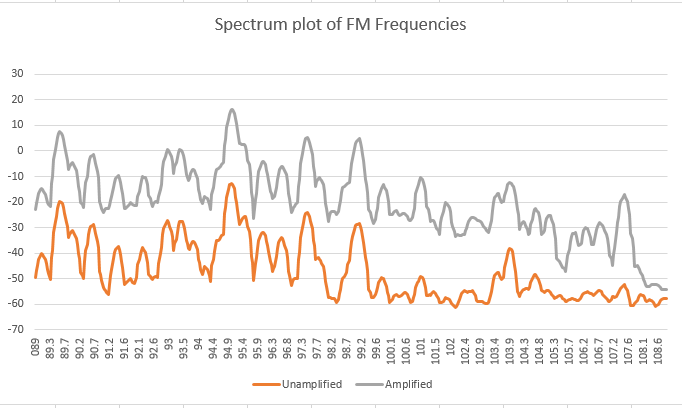Solid Signal loves to cater to enthusiasts. There are plenty of places for “mainstream” people to find parts for their “mainstream” hobbies. The fun of working with Solid Signal is that I get to interact with people who love really esoteric things.
Most of us listen to FM radio in our cars, maybe. More and more people are streaming in their cars and I could go on a whole rant about why that is. (Not the point here.) There are some folks though, who really dig FM radio. They want FM radios in every room, and they put up roof-mounted antennas to help them get the best reception.
And I completely support them! You should absolutely find a hobby that really makes you happy and then dive into it. If you’re an FM radio fan, ham radio fan, CB radio fan, whatever lights you up is awesome as far as I’m concerned.
It’s worth pointing one thing out before I start, though. In general, I tend to tell people they might not need an amplifier, even if they think they do. This is simply because the digital signals used for TV broadcasting react very differently to amplification than you might expect. However, FM broadcasting is still the same sort of analog broadcasting it’s always been. So, the way the amplifier behaves is the same as it’s always been. That’s good news if you’re trying to use an amplifier to get better FM reception.
I was contacted by an FM radio fan who wanted to know if we had a preamp that would work with FM radio.

This is the LNA-200 by Winegard. It’s what you’d call a “wideband” amplifier. It’s designed to provide good amplification for TV antennas. Because all FM broadcasting takes place between TV channels 6 and 7 I had a feeling it would work for FM as well.
So, I took out my trusty Televes H45 spectrum analyzer and took a look. For an antenna, I simply connected a roof-mounted Channel Master UHF/VHF antennas that’s on the lab roof from years back.

You can see in this chart that you actually get really good amplification all the way through the FM range, with some lower frequencies getting boost over 20dB. The amplification gets lower toward the high frequencies. This is typical for less expensive amplifiers that lack slope compensation. Slope compensation is usually found in more expensive satellite amplifiers, and rarely in TV antenna amplifiers.
You might be saying, “well of course if it amplifies TV it will amplify FM.” Actually a lot of TV reception equipment has a built in FM trap to specifically block FM signals. Strong FM signals can interfere with weaker transmissions on channels 6 or 7, and FM radio isn’t the only use of that frequency range. Some first responders use it too. In older times, people complained when a cop car drove by and channel 7 got all snowy. So, antenna makers and some preamp makers built FM traps into their equipment to deal with the problem.
I had a feeling that this Winegard Boost XT amp, with its simple design and advanced electronics, wouldn’t have an FM trap. It’s generally not needed today with digital signals and so it would be a waste of money to engineer.
I think it’s awesome when I can find new uses for products we already sell. If you’re an FM fan and you’re looking for a way to overcome up to 400 feet of extra cable in your home or office, consider a Winegard Boost XT LNA-200 amplifier, available now of course at Solid Signal. If you’d like to know more about amplifiers of any kind, call us at 888-233-7563 or fill out the form below.
The post What’s the best preamp for an FM antenna? appeared first on The Solid Signal Blog.
Continue reading...
Take, for example, FM lovers.
Most of us listen to FM radio in our cars, maybe. More and more people are streaming in their cars and I could go on a whole rant about why that is. (Not the point here.) There are some folks though, who really dig FM radio. They want FM radios in every room, and they put up roof-mounted antennas to help them get the best reception.
And I completely support them! You should absolutely find a hobby that really makes you happy and then dive into it. If you’re an FM radio fan, ham radio fan, CB radio fan, whatever lights you up is awesome as far as I’m concerned.
It’s worth pointing one thing out before I start, though. In general, I tend to tell people they might not need an amplifier, even if they think they do. This is simply because the digital signals used for TV broadcasting react very differently to amplification than you might expect. However, FM broadcasting is still the same sort of analog broadcasting it’s always been. So, the way the amplifier behaves is the same as it’s always been. That’s good news if you’re trying to use an amplifier to get better FM reception.
The best preamp
I was contacted by an FM radio fan who wanted to know if we had a preamp that would work with FM radio.

This is the LNA-200 by Winegard. It’s what you’d call a “wideband” amplifier. It’s designed to provide good amplification for TV antennas. Because all FM broadcasting takes place between TV channels 6 and 7 I had a feeling it would work for FM as well.
So, I took out my trusty Televes H45 spectrum analyzer and took a look. For an antenna, I simply connected a roof-mounted Channel Master UHF/VHF antennas that’s on the lab roof from years back.

You can see in this chart that you actually get really good amplification all the way through the FM range, with some lower frequencies getting boost over 20dB. The amplification gets lower toward the high frequencies. This is typical for less expensive amplifiers that lack slope compensation. Slope compensation is usually found in more expensive satellite amplifiers, and rarely in TV antenna amplifiers.
Was there any doubt?
You might be saying, “well of course if it amplifies TV it will amplify FM.” Actually a lot of TV reception equipment has a built in FM trap to specifically block FM signals. Strong FM signals can interfere with weaker transmissions on channels 6 or 7, and FM radio isn’t the only use of that frequency range. Some first responders use it too. In older times, people complained when a cop car drove by and channel 7 got all snowy. So, antenna makers and some preamp makers built FM traps into their equipment to deal with the problem.
I had a feeling that this Winegard Boost XT amp, with its simple design and advanced electronics, wouldn’t have an FM trap. It’s generally not needed today with digital signals and so it would be a waste of money to engineer.
I think it’s awesome when I can find new uses for products we already sell. If you’re an FM fan and you’re looking for a way to overcome up to 400 feet of extra cable in your home or office, consider a Winegard Boost XT LNA-200 amplifier, available now of course at Solid Signal. If you’d like to know more about amplifiers of any kind, call us at 888-233-7563 or fill out the form below.
The post What’s the best preamp for an FM antenna? appeared first on The Solid Signal Blog.
Continue reading...

